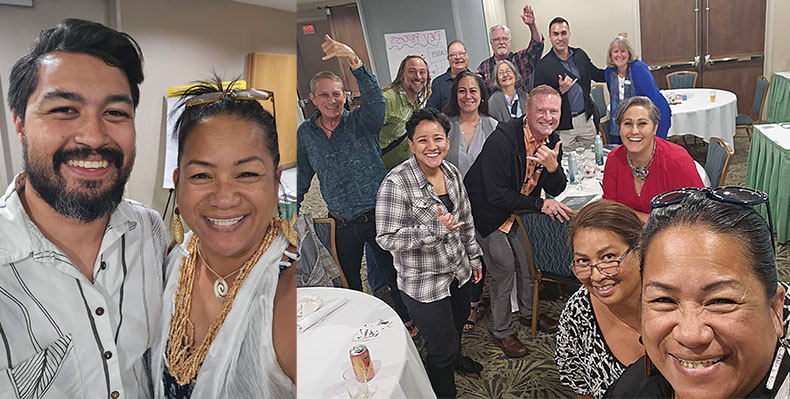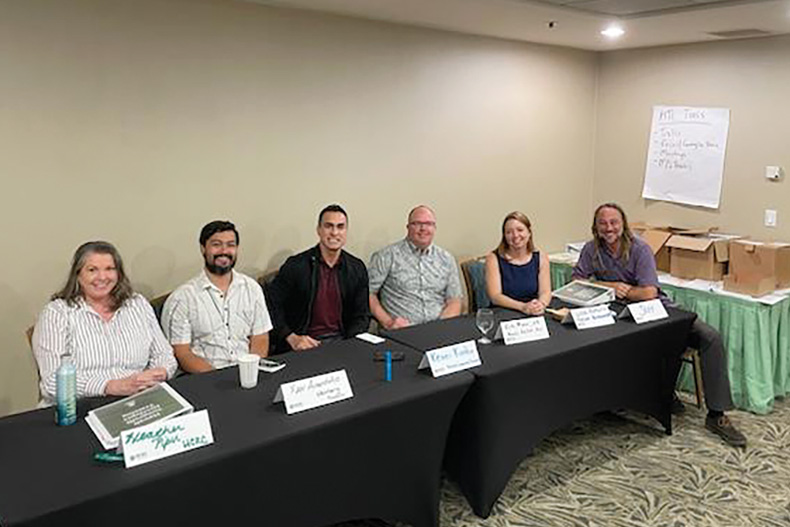The Nonprofit Housing Movement
Hawai‘i Community Lending’s new program addresses the need for more nonprofit affordable housing developments in the islands.

Published: August 2024
The vast majority of housing in Hawaii and throughout the United States is built by for-profit businesses, and now, with thousands of residents still displaced by the Lahaina fires, more nonprofit developers are urgently needed.
“If we’re going to adequately address the housing shortage for residents, then we need something in addition to the private market,” says Gavin Thornton, executive director of the Hawai‘i Appleseed Center for Law & Economic Justice. “That’s why investing in those nonprofit developments, and removing the financial incentives, is so important,” Thornton continues. “It makes it less about being a smart financial investment and more about being a home for someone that needs it.”
This year, Hawai‘i Community Lending, a community loan fund, introduced a new program aimed at increasing the number of nonprofit developments in the state, especially on Maui.
“We brought together nine different nonprofits who did a weeklong training with us,” says Jeff Gilbreath, executive director of Hawai‘i Community Lending. These consisted of small to midsize nonprofit developers, some of whom already have a few completed projects but lack the staff or capacity to leverage larger dollars for affordable housing developments.
“We took them through kind of the development process, one-on-one, to share with them, like, what do you need as a rental housing developer or a homeownership developer to do this work and expand your capacity,” says Gilbreath. Hawai‘i Community Lending also introduced strategies to bring on partners and shared funding and financing options with them, including information on the federal home loan bank and community development financial institutions.
“Kaiser Permanente heard the need for supporting nonprofit developers in building affordable housing and made an investment to do just that,” says Gilbreath. “It has been 32 years since the Hawai‘i state Legislature made the recommendation to increase the capacity of nonprofit affordable housing developers as a way to address our long-standing housing crisis. We mahalo Kaiser Permanente for listening and taking action so this work can finally come to fruition.” The training was completed in May and the nonprofits have since been paired with subject matter experts to guide them in their affordable housing plans over the next 12 months. These experts help with questions about acquisitions, federal programs, working with land trusts, and more.
The shortage of nonprofit developers is largely due to developers’ desires to make money, Thornton says. And purchasing resources, such as land, takes time. “You have to build the resources to be able to purchase the land and do the very expensive work of housing development, but if you’re good at it, you make a profit that allows you to do more and purchase more land and do more developments,” says Thornton. “It’s hard for nonprofits to do it.”
More regulations within the private sector could help. In 2022, of the 21,131 housing units sold across Hawaii, only 27% were owner-occupied. Thornton says regulating short-term rentals and increasing taxes on investment properties could bring property prices down and potentially bring more of those homes into the long-term housing market. Relaxing zoning requirements could also make it easier to develop multifamily housing, he says.

On completion of the nonprofit developer capacity program, Gilbreath would like to see nonprofits double their development capacity. He would also like to see the program continue year after year. “These folks are already planning to build more than they had initially thought before getting into the program,” he says. “You’ll see us be better positioned, like say in Lahaina, to rebuild faster because you've got more people doing it and at levels that are affordable for families who need it.”